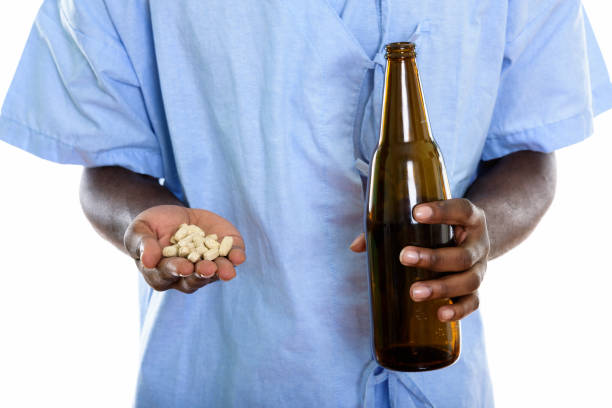Combining alcohol with paracetamol (acetaminophen) can be extremely harmful to your health. While both substances are commonly consumed separately, their interaction can lead to severe and potentially life-threatening consequences. Understanding the risks and knowing why it’s important to avoid this combination can help you make safer choices for your health.
Why is it Dangerous?

- Liver Damage
- Metabolic Overload: Both alcohol and paracetamol are metabolized by the liver. When taken together, they put extra strain on the liver, increasing the risk of liver damage. Chronic alcohol consumption alters liver function and makes it more susceptible to the toxic effects of paracetamol.
- Toxic Metabolites: Paracetamol is broken down into a toxic metabolite (NAPQI), which the liver neutralizes with the help of glutathione. Alcohol consumption depletes glutathione levels, allowing NAPQI to accumulate and cause liver damage.
- Stomach Issues
- Irritation and Inflammation: Both substances can irritate the stomach lining. Combining them can exacerbate this effect, leading to increased risk of ulcers, gastritis, or stomach bleeding.
- Increased Acidity: Alcohol increases stomach acid production, which can further irritate the stomach lining when combined with paracetamol.
- Increased Toxicity
- Enhanced Effects: Alcohol can enhance the toxic effects of paracetamol, making even standard doses potentially dangerous. This heightened toxicity can lead to acute liver failure, which is a medical emergency.
- Delayed Symptoms: The symptoms of liver damage from this combination may not appear immediately, which can delay treatment and worsen outcomes.
Symptoms of Liver Damage
It’s crucial to recognize the symptoms of liver damage early to seek prompt medical attention. Symptoms may include:
- Jaundice: Yellowing of the skin and eyes, indicating liver dysfunction.
- Abdominal Pain and Swelling: Pain or discomfort in the upper right abdomen, where the liver is located.
- Chronic Fatigue: Persistent tiredness and weakness.
- Nausea or Vomiting: Feeling sick to the stomach or actual vomiting.
- Dark Urine and Pale Stools: Changes in urine and stool color can be signs of liver problems.
Safe Usage Tips
Avoid Alcohol
- Complete Abstinence: Do not drink alcohol while taking paracetamol. Even small amounts of alcohol can increase the risk of liver damage when combined with paracetamol.
- Plan Ahead: If you know you will be taking paracetamol, avoid alcohol entirely during this period.
Follow Dosage Instructions
- Adhere to Recommendations: Stick to the recommended dose on the packaging or as prescribed by a healthcare provider. Never exceed the maximum daily dose.
- Timing Matters: Pay attention to the timing of doses to avoid accidental overdose.
Check Ingredients

- Be Informed: Be aware of other medications you are taking that may contain paracetamol to avoid exceeding the safe limit.
- Read Labels: Always read the labels of over-the-counter medications to check for paracetamol content.
Consult a Doctor
- Seek Professional Advice: Talk to your healthcare provider if you have any concerns about using paracetamol, especially if you consume alcohol regularly.
- Explore Alternatives: Ask about alternative pain relief options if you have a history of liver problems or alcohol use.
Conclusion: Protecting Your Liver and Overall Health
Combining alcohol with paracetamol poses significant risks to your liver and overall health. Understanding these dangers and taking steps to avoid this harmful combination is crucial. By abstaining from alcohol while taking paracetamol, adhering to dosage instructions, checking for hidden sources of paracetamol in other medications, and consulting with healthcare professionals, you can protect your liver and ensure safer use of medications.
Stay informed and make responsible choices to safeguard your health. Remember, protecting your liver today can prevent serious health complications in the future.


